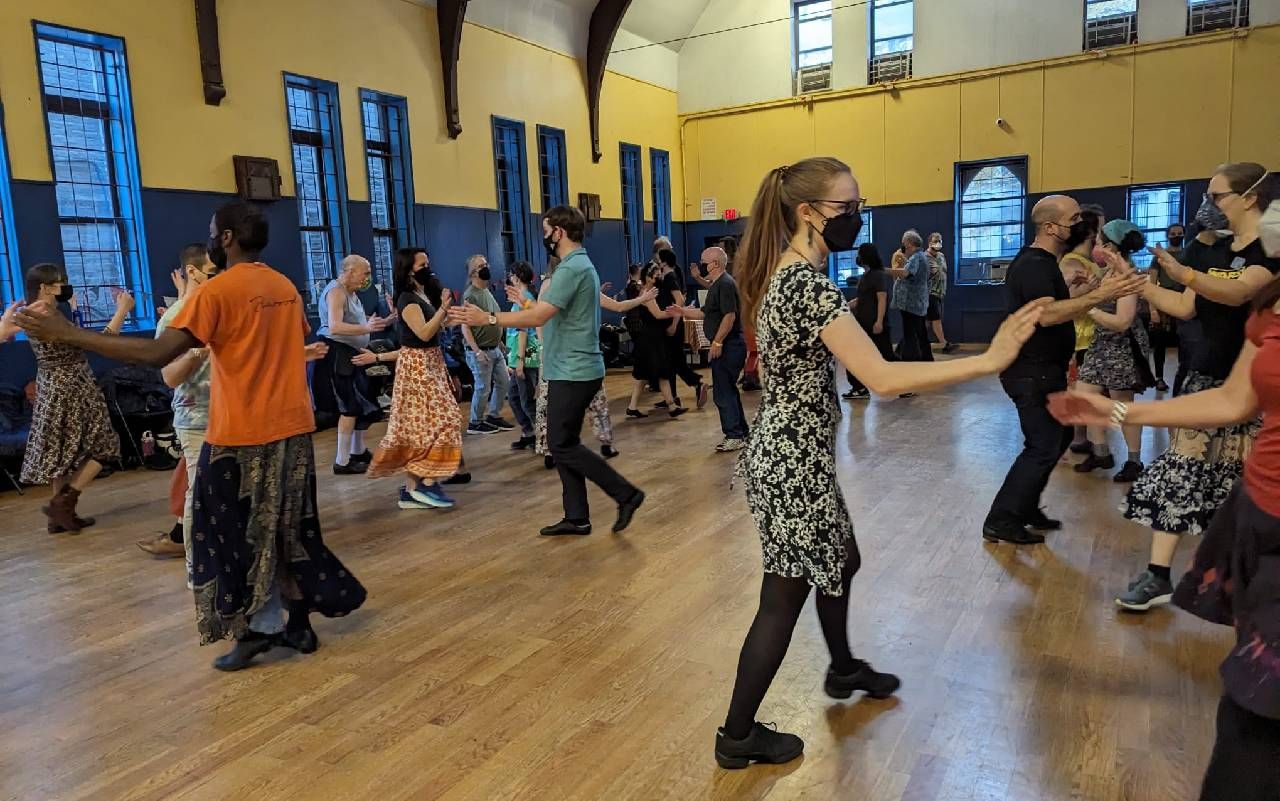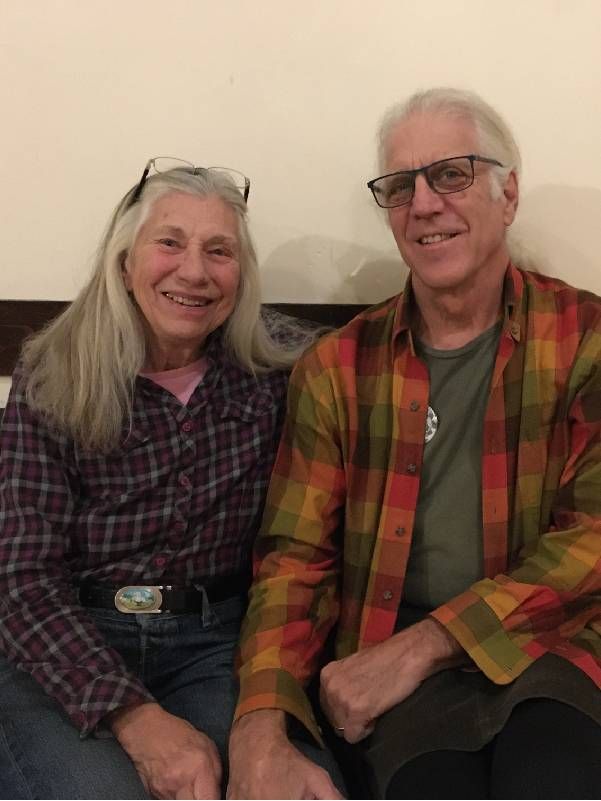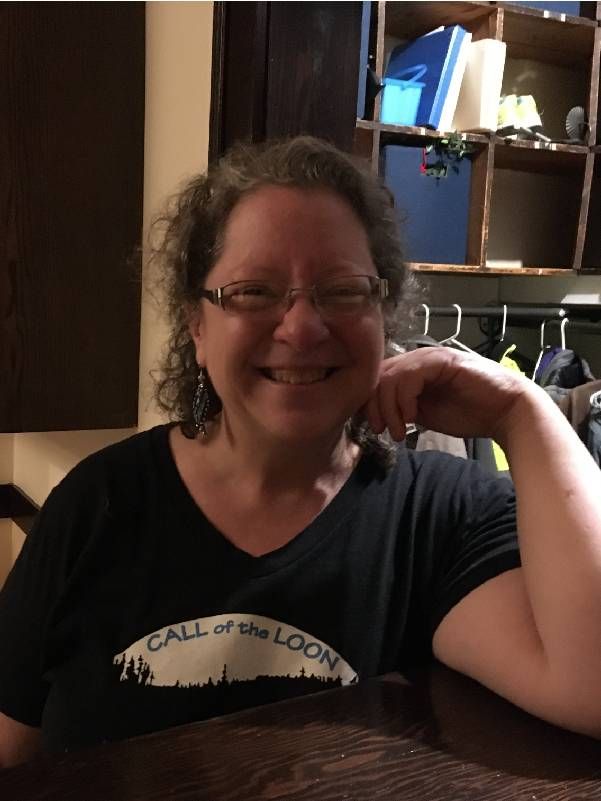Contra Dance: Linking the Generations
Rooted in early American folk tradition, contra dance has adapted to the times with new tunes and dances, and sometimes, new instruments and gender-free roles
So many of us live in our silos, divided politically and generationally, communicating through cellphones and social media posts. But in contra dance halls across the country — and in fact, the world — you can find a kaleidoscope of human beings of all ages wearing big smiles, moving to live music, twirling, joining hands and changing partners every 40 seconds or so. The whole room moves as one, executing patterns at the direction of a caller.

This is contra dance, rooted in early American folk tradition and revived by young folkies in the 1960s and '70s, many of whom are still dancing. It's a living tradition that has adapted to the times — with new tunes and dances, and sometimes, new instruments and gender-free roles. Contra dance is beginner-friendly, and you don't need to bring a partner.
"A contra dance can be thought of as a triangle of energy with the three vertices being the musicians, the dancers and the caller."
It's a bit like square dance but starts with long lines down the dance floor, which then move into various patterns. Each dancer starts with a partner, but each person will dance with 30 to 40 people over the course of a 15-minute tune.
Elements of Contra
Many people say that it's the live music that attracts them to contra. But dancing allows you to move to it rather than sit and watch as you would in a concert hall.
"A contra dance can be thought of as a triangle of energy with the three vertices being the musicians, the dancers and the caller," says Beau Farmer, a frequent caller at Tapestry Folkdance Center in Minneapolis. "Magical evenings occur when all three come together, feeding off each other's energy to raise and sustain an atmosphere of fun and joy."
Callers are like the orchestra conductors of contra dance. They're also teachers, walking dancers through the steps before each tune and making beginners feel welcome. And since there are no pre-ordained steps for a contra tune, they call out the steps throughout the music.
A Low Bar to Entry
In the contra world, there's a common saying: "If you can walk, you can dance." All the moves are executed in walking steps, and it's easy to learn the terminology: star, allemande, promenade — like square dance.
"There's a low bar to entry and having fun," says Ted Hodapp, a long-time caller at Tapestry and elsewhere. Unlike learning, say, tango or swing, you can dance almost instantly.
Hodapp's advice to first-timers: Come at the beginning, when there's generally a 30-minute lesson that precedes the dance. Commit to the first three or four dances. Then, having learned the steps, "you're home free."

Will Mentor, 65, an artist and professor in northern Vermont and a nationally known caller, advises newbies to attend five or 10 dances. By then, the calls will have become familiar, and you won't have to think so hard. Then you'll know whether it's for you.
Beginning dancers are always given this advice to help them avoid dizziness during spinning: Look into the eyes of your partner. Mentor says, in what could well serve as wisdom for our modern world at large, "In chaos, in a spinning world, stability is in the eyes of the other. They are the constant."
Families, Generations and Communities
The Massachusetts-based Country Dance and Song Society is an umbrella organization connecting folk dance, music and song societies around the world. Their website is a trove of information and resources and includes a listing of the camps they sponsor.
Carl Levine, 62, of Brooklyn, New York, a long-time caller, says, "I think there is nothing more important that CDSS does than the family camp," reflecting contra dance's intergenerational nature. His daughter, Chloe, grew up attending contra camp, and today, at 23, writes songs and performs, backed by musicians with whom she grew up. The Levines were featured together in a StoryCorps interview, "A Family Built on the Dance Floor."
Gaye Fifer, of Pittsburgh, a retired elementary school teacher and well known caller, says, "I took my daughter to her first dance before she could walk, and she grew up going to CDSS family camp every summer. I attribute much of her self-assurance and poise to the dance community and her interacting with people of all ages. She found community at dance camps and continues to create community wherever she goes."
An Inclusive and Safe Environment
Dancers say that a big part of contra's appeal is the safety of the environment. Celia Swanson, 59, an English professor who dances at Tapestry, attended her first dance after a breakup. She said, "It's a place where a single person can experience safe touch."
Contra dance is a boon for the introverted. It's an opportunity for social connection without pressure to chit-chat any more than you want to.
No alcohol is served at contra dances, making it nothing like a bar scene. Some people have met their mates there, but it is not a singles' market.
It's customary to start each dance with a new partner, women can ask men to dance, and you can dance with a partner of the same gender. It's also perfectly fine to refuse a dance.
These days, as younger dancers take leadership roles, some of the boundaries are stretching. To be sure, there are many traditionalists who prefer "ladies and gents." But some contra communities have moved to non-gendered terms terms like "larks and robins." It's also LGBTQ+-friendly. Lavender Country and Folk Dancers is a nationwide network of gender-free community dances and dance camps.
Mentor observes that contra dance is one way to organize social interaction with rules, boundaries and consent. As such, contra dance is a boon for the introverted. It's an opportunity for social connection without pressure to chit-chat any more than you want to.
A Living Tradition: Community for Today
Contra dance may be rooted in early America, but it evolves. As Fifer puts it, "We are not re-enactors."

She points out that dance keeps us healthy: physically, of course, and mentally, because you're socializing and learning and remembering steps.
"Where else do you find anything like this?" dancers ask. Unlike so many other group activities, it's not competitive and isn't a spectator sport. "And where else would you see a 20-year-old dance with a 90-year-old?"
Life Impacts
Dancers have no trouble describing how contra dance has impacted their lives. People spoke of finding community and safe touch after a divorce or breakup and finding joy again.
Levine said, "If not for contra dance, I wouldn't have gone to law school." He started dancing at a low point during his twenties. There he found warmth and a comfortable social base, which gave him the confidence to switch careers from special education teacher to labor lawyer.
Linking the Generations
As for the lifelong dance bond with his daughter, Chloe, Levine says, "How totally lovely that I was able to share something with my daughter that is still meaningful to her, and that at the age of 23 she still wants to dance with her 62-year-old father."
Fifer recalls a time when several twentysomethings attended a contra dance weekend. "They did not know each other previously, but connected quickly. After the evening dance, they organized a late-night swing dance. After that, they came and joined a group of adults, hanging out on the porch, visiting and snacking. This in itself was gratifying, since it seemed they actually wanted to be with us!," she says.
"After the adults went off to bed, the young folks stayed up for another two hours, singing together," Fifer adds."Their connections to each other, and to these traditions, made me feel that there was hope for the future!"

Barbara J. Tuttle is a freelance writer in Minneapolis. Her features have appeared in Star Tribune, Denver Post, Wildlife Conservation, the Cricket Media magazines for children and many other publications. Read More

